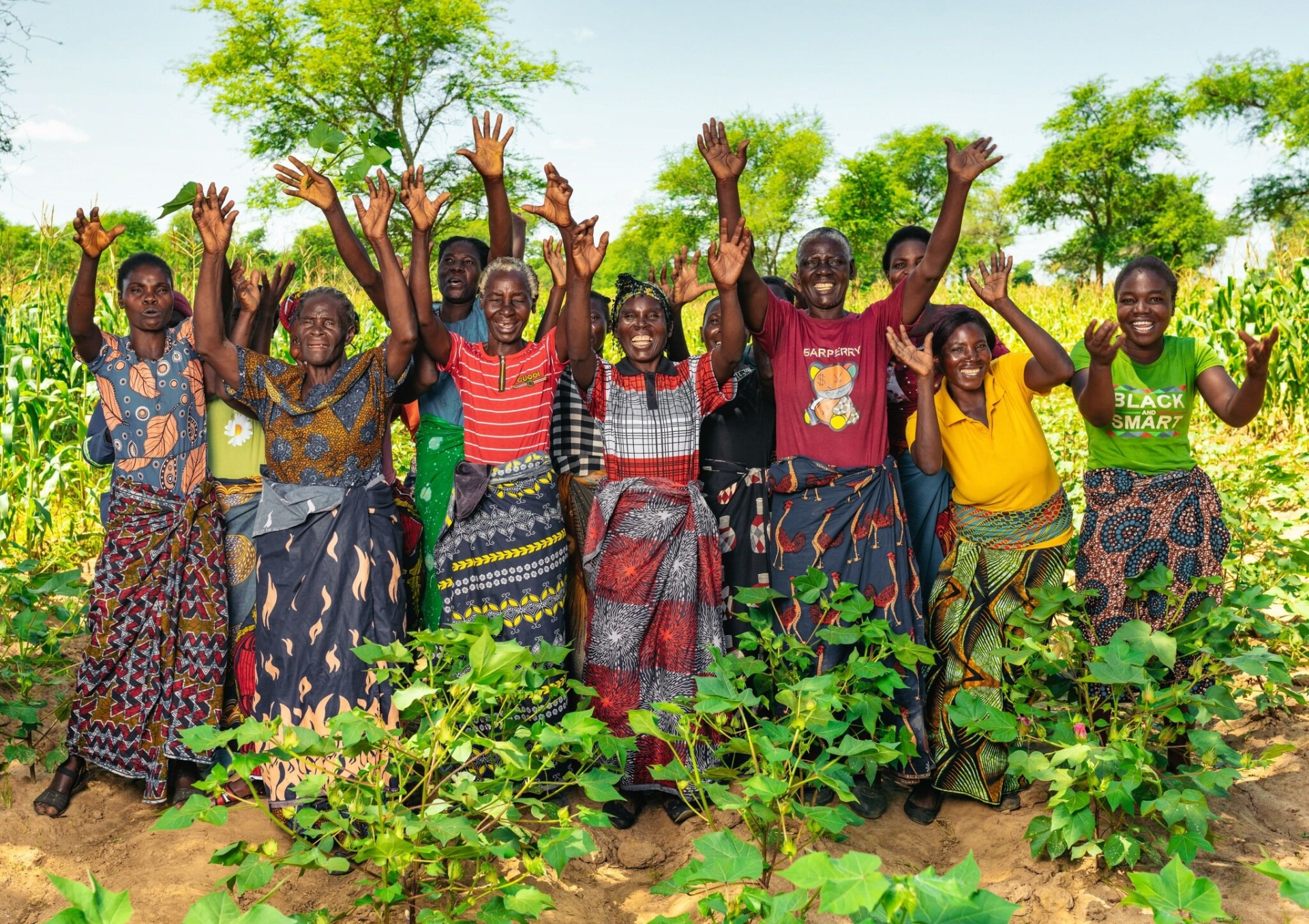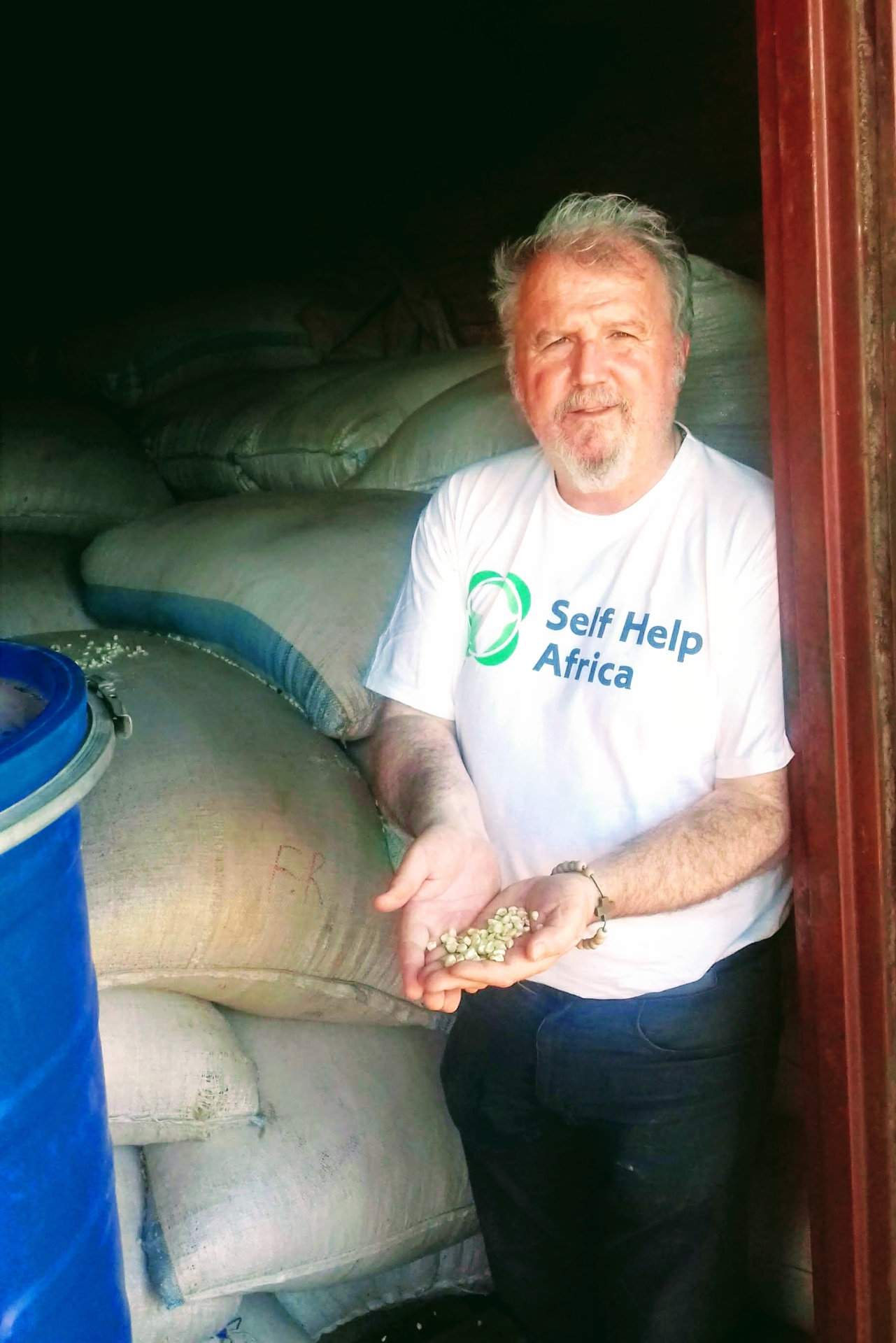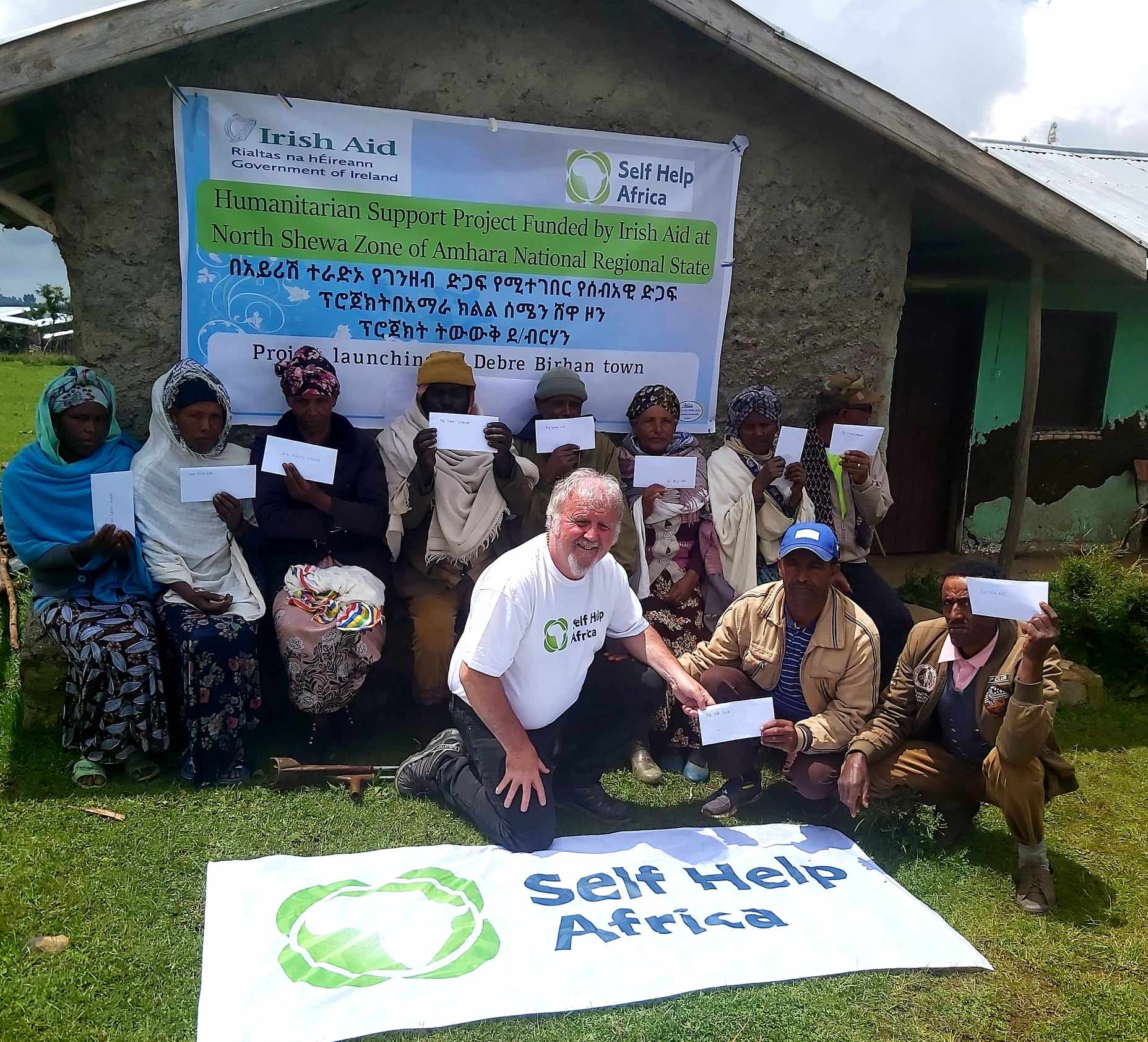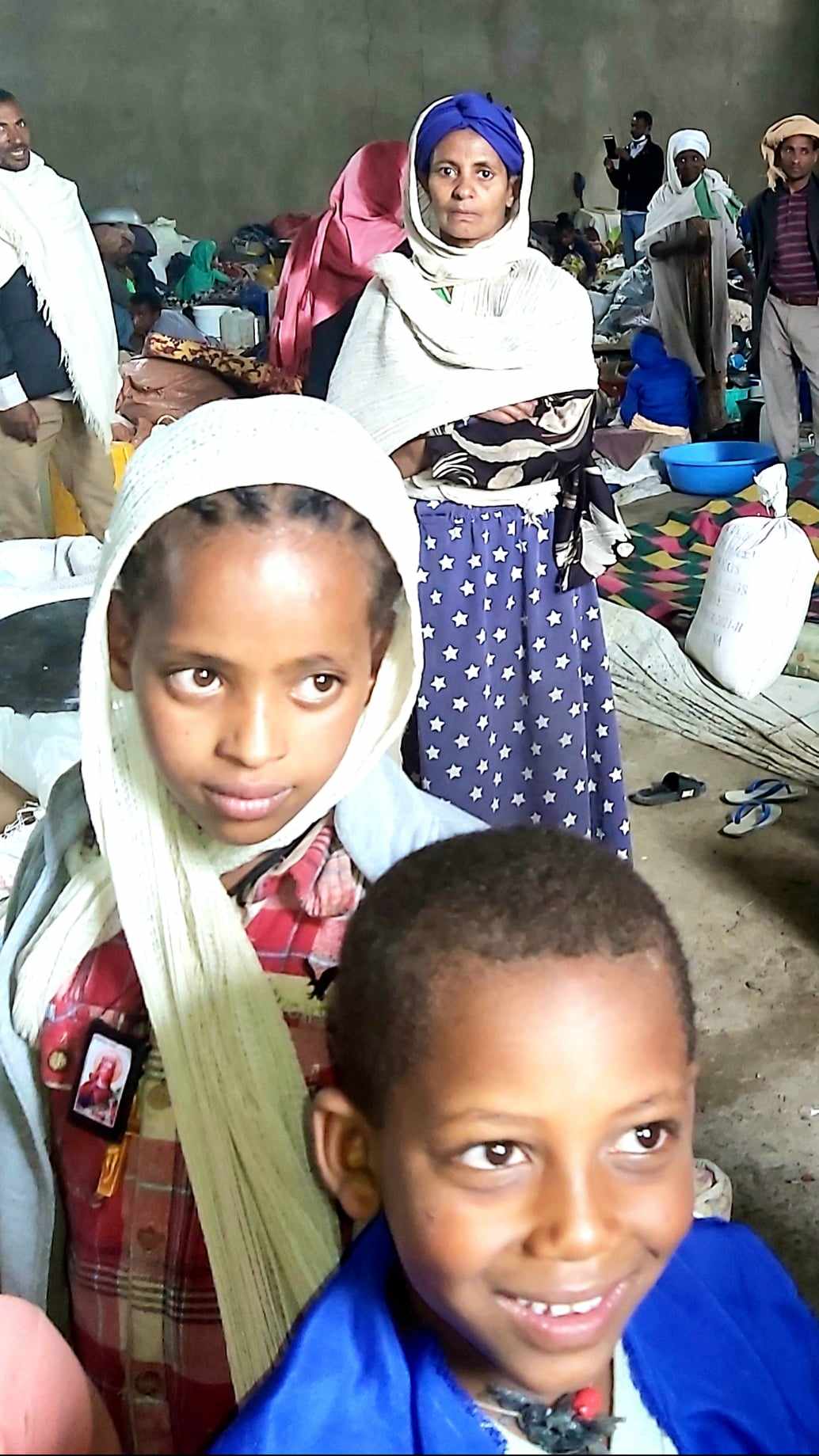Ronan Scully of Self Help Africa visiting an agriculture project in Debra Berhan in Ethiopia
The Global Hunger Index reports that people do not have enough food to eat in 42 countries
GLOBAL hunger levels will stay high for another 136 years if efforts to tackle it continue at the current pace, a new report has found.
The Global Hunger Index is reporting that people do not have enough food to eat in 42 countries and that famine is now looming in Sudan, Somali, parts of Northern Ethiopia and Gaza due to conflicts.
In 2012, member states of the UN pledged that they would work to eliminate global hunger by 2030, but the report finds that the prospect of achieving that now looks “very grim”. In addition, there were 281.6 million people in 59 countries and territories facing “crisis level or acute food insecurity”.
The report points out that there was “notable progress” made to tackle hunger between 2000 and 2016 and it states that this demonstrates how much can be accomplished in just a decade and a half. However, this progress has slowed notably in the last number of years because of the effects of covid, many wars and conflicts, the higher costs of living and the more frequent severe effects of climate change, which now makes the target of zero hunger by 2030 looking “unlikely” to be achieved.
These findings are extremely worrying and upsetting. World Food Day and World Eradication of Poverty Day which were held recently serves as a powerful reminder that feeding the world’s population remains a challenge. Remember No Food = No Future!

Deeply upsetting
Our world should not have to wait over 136 years for low hunger levels to be achieved. We should not have situations where children are so hungry and malnourished that they can’t even speak or cry. Globally, around 733 million people face hunger each day due to a lack of access to a sufficient amount of food. Around 2.8 billion people cannot afford a healthy diet. It is so deeply upsetting that hunger persists on such a huge scale with all the resources available in our modern world. It is also alarming that progress made in addressing hunger has stalled largely due to widespread wars and conflicts, the higher costs of living and the increasing severe impacts of climate change. It's also so sad to think that acute food insecurities and the risk of famine are rising and starvation is proliferating as a weapon of war. Inequality, injustice and the tragic impact that hunger and poverty has on millions of people with whom we share our world is not something that we should turn our back on. Where we work this crisis in East Africa in places like Ethiopia, Kenya, Sudan, North Uganda and Somalia gets scant media attention, with a resultant lack of public awareness of the sheer scale of suffering. The horrific stories of hunger, gender-based violence, bombing and looting that is happening at present are truly heartrending. These horrors apply not to thousands or tens of thousands but millions of people. The scale is truly shocking.

Time running out
Time is running out and for many in East Africa it is too late. In my work with the Irish international development organisation Self Help Africa who are so thankful to Irish Aid and the Irish public for their continuing support, I have heard from African colleagues and many African families I have recently visited particularly in Ethiopia and Kenya and east Africa that they have one plea for the rest of the world. "Please don’t look away. Please help. Our children are suffering; our children are dying. We feel forgotten. Everyone is suffering."
They are suffering together in the camps. Time is not on their side. Desperation is setting in as more and more people are forced to flee their communities and flock to pockets within their countries particularly in parts of East Africa such as Sudan, Somalia, Ethiopia, Northern Uganda and parts of Kenya where they’re hoping to find drops of clean water, nutrition for their children and medicines to prevent the worst from happening.

Eyes averted
The longest drought in recorded history has given way to rains and flash flooding, and the ongoing conflicts in some of the countries are continuing unabated in places. Food and energy prices remain stubbornly high as the impact of the various conflicts reverberates around the regions. 45.9 million people are facing high levels of food insecurity with escalating hunger levels in Sudan, northern Ethiopia, Somalia, parts of Kenya and South Sudan. 10.8 million children under the age of five years are estimated to be facing acute malnutrition by the end of 2024 and this is expected to worsen during the lean season. Conflict, climate extremes and economic shocks in the East Africa regions are facing multiple crises simultaneously. With many people at immediate risk of starvation or death, the rich world can no longer look away. A grave humanitarian emergency is developing before our eyes, in other words, and yet it seems as if the world’s eyes are averted.
After five consecutive failed rainy seasons, flooding has replaced drought in parts, killing livestock and damaging farmland, further shattering livelihoods. And now the outbreak of conflict in Sudan is forcing hundreds of thousands of people to flee their homes. When the region’s long-awaited rains arrived in June, they should have brought some relief. But instead, flash flooding inundated homes and farmland, washed away livestock, and closed schools and health facilities. More people were forced from their homes.
After many years of drought, millions of people across parts of Ethiopia and Kenya face severe hunger. East Africa faces a convergence of increasingly recurring and intensifying climate crises, mainly drought and flooding, conflicts, disease outbreaks, and economic shocks. These, including the impact of El Niño conditions, are driving millions of people into displacement, acute food insecurity and malnutrition, public health emergencies, and destitution. Regionally, a deepening food insecurity crisis has worsened for the fifth consecutive year, with approximately 25% of the population experiencing high levels of acute food insecurity in 2024.

Harvests yield little
Harvests have yielded little and water sources have dried up. Conflict and insecurity continue to intersect with the drought emergency and in some cases flooding emergencies. As conditions continue to worsen, hundreds of thousands of people have been forced to flee in search of safety and assistance. Several East African nations appeared in the recent UN report “Hunger Hotspots,’ with climate threats in some cases piled on top of political and economic vulnerabilities.
In a region where most people are employed in agriculture and few communities have irrigation systems or long-term water storage, the consequences have been profound. Farmers whose crops fail often couldn’t afford to purchase new seed for the next season’s planting. Most herders have no access to insurance; when their cattle died, they were forced to abandon the livelihood that may have sustained their families for generations.
A litany of other issues compounded the crisis: local conflicts, high food prices triggered by the wars in Ukraine and Gaza, ongoing conflict in Ethiopia, Somalia and Sudan, global economic fallout from the covid-19 pandemic. A food basket in Eastern Africa in October 2024 cost 40% more than a year ago and in Ethiopia, the cost of a food basket is up 66% and fuel prices have almost doubled in a year. It will take years for the region to recover, and humanitarian assistance is a lifeline. These rising prices along with drought and ongoing conflicts have meant the meagre savings and the other safety nets that families hang onto, such as crops and livestock, are long gone. Almost five consecutive dry seasons in East Africa have forced hundreds of thousands of people to leave their homes, caused the death of millions of livestock and the destruction of crops and livelihoods.
Children are particularly vulnerable to acute hunger and malnutrition and there are now 10.8 million children facing severe drought in East Africa, according to UN and INGO sources. For me, this starvation is a political failure. The world produces enough food for our global population but it lacks the political courage to ensure that it is distributed fairly.

Responding
The environment in East Africa is burning. It's melting. It's flooding. It's depleting. It's drying. It's dying and is evoking a dystopian type of future. Addressing climate change is a human rights issue for everyone and there is still time to act and make a better, more equal and safer world for all. But that time is now. We must not deliver this future of hunger and suffering to our children, and their children especially the children of East Africa. And we don't have to, for we, the generation with the most powerful technological tools in history, have the capacity to respond to it and change it.
At Self Help Africa with help and support from Irish Aid, we are responding as best we can to this crisis, supporting communities who are on the frontline of changing climate in Kenya, Uganda, Ethiopia and other parts of East Africa, as they struggle to make ends meet against near insurmountable odds. We are introducing new crop varieties to small-scale farming households, promoting alternate drought tolerant crops and supporting irrigation development, just some of the ways that can help families to survive.
New and improved breed livestock are also being promoted, while ‘climate smart’ farming techniques are being encouraged to allow farmers to grow food even in these tough conditions. ‘Climate smart’ farming might sound complex, but it can be a lot simpler than it sounds! For example – leaving stems and stalks of grain crops in the field after harvesting is one simple, yet effective way to retain moisture in the soil and keeping the sun from beating down directly on the earth, while ‘zero tillage’ planting – a method that encourages farmers to dig just a small hole for each seed, rather than tilling an entire field, is another way of keeping whatever moisture does exist, in the ground.
Other simple farming approaches – like growing ground cover crops and providing various seeds – like groundnuts or sweet potato vines – also shade the earth from the sun’s rays, while they provide important and nutritious crops for the family to eat and the farmer to sell. And activities like manure making, composting, and tree planting as part of our one million tree's campaign are all activities that help restore depleted nutrients from the soil, and keep farmland healthy and productive from one year to the next. There is much happening to support rural poor communities in Africa to cope with the threat that they face from global warming, but much more needs to be done, both to support communities that are immediately facing these threats, and support the generations to come as they confront the existential challenge that is posed by the climate crisis.

Glimmer of hope
Despite the challenges, change is possible and there are glimmers of hope. At a national level, change will depend on policies that place food security and sustainable farming at the core of climate action plans. These policies must be shaped by dialogue between governments, the private sector and civil society. Collaborations are vital to addressing food insecurity and supporting African farmers.
Many countries, including in sub-Saharan Africa, have made bold public commitments to improve food access for the people living there. Ethiopia has committed to allocating 10pc of its national budget to agriculture. Such public pledges drive accountability, but without international support, many countries are unlikely to meet their targets. International change requires reform of international finance to reduce debt burdens and allow governments to invest in the agriculture sector and direct support through innovative and effective partnerships.
The Government, through Irish Aid’s Africa Agri-Food Development Programme, for example, offers matched funding to Irish businesses seeking to partner with companies in sub-Saharan Africa. These collaborations are vital to addressing food insecurity and supporting African farmers as they scale up production. Self Help Africa partnered with the EU in Kenya and Zambia to deliver €70m in investments for small and medium-sized enterprises during the last four years, connecting more than 300,000 farmers to new markets, introducing “climate-smart” farming practices and creating more than 2,600 jobs. World Food Day which was held recently serves as a powerful reminder that feeding the world’s population remains a challenge, but it is also an opportunity to refocus our efforts on Africa, all too often forgotten as other crises grab the headlines. Remember No Food = No Future!
Please help
At Self Help Africa through the help and support of Irish Aid and the generosity of the Irish public and our partners on the ground, our long term strategy expressly identifies the changing climate and the problems it can create as the context within which we must implement our work. To make a donation or find out more about the work of Self Help Africa with its work and to “Act locally but impact globally”, you can make a credit or laser card donation by phoning ((01) 6778880 or donate through our website www.selfhelpafrica.org or simply send whatever you can afford to Self Help Africa, Westside Resource Centre, Seamus Quirke Road, Westside, Galway.
Subscribe or register today to discover more from DonegalLive.ie
Buy the e-paper of the Donegal Democrat, Donegal People's Press, Donegal Post and Inish Times here for instant access to Donegal's premier news titles.
Keep up with the latest news from Donegal with our daily newsletter featuring the most important stories of the day delivered to your inbox every evening at 5pm.